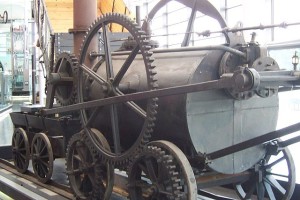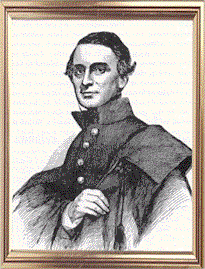I drive. A lot.
In a given week it’s not unheard of for me to put 300 miles on my minivan. That’s a lot for a stay at home mom that lives in a suburban area. Somehow over the years my life ended up that spread out.
My family drives 25 miles each way to get to church. My daughter has to go to a special type of eye doctor. The closest one is 44 miles away. My other daughter sees a different type of specialist three times a year. That one is 37 miles in the opposite direction.
Seriously, I spend a lot of time in my car. Sadly it looks like I live in it, but that’s beside the point. One of the things I frequently find myself thanking God for is a vehicle that makes this constant driving possible. Yes it is unpleasant to drive for two and a half hours round trip for a simple trip to the doctor, but the fact that I can get to a specialist that far away is incredible.

For our Regency friends the thought of traveling so far would have been a daunting task. It’s a common debate among Regency authors: how far people could travel in a day and how long it took them to do so.
45 miles in an hour and a half is never considered. Our heroines are still 100 years away from Henry Ford’s assembly line constructed Model T. The groundwork for the automobile was already underway, though.
Self-propelled vehicles actually existed for 40 years before Prinny was installed as Prince Regent. They weren’t very impressive and would have moved considerably slower than the ubiquitous horse and carriage, but they existed. They were used to haul heavy artillery across the French countryside.

In 1801, Richard Trevithick drove the first people carrying, self-propelled conveyance on England’s roads. The short Christmas Eve journey was a fun novelty, but he never managed to perfect the road-going vehicle. The Puffing Devil, as the vehicle was known, worked it’s way into the history of the steam engine trains that were soon to be working their way across England’s landscapes.
Steam powered vehicles pop up in Regency stories with enough frequency that the idea of the Puffing Devil isn’t very far fetched.

But what about a fuel powered vehicle? Several countries and a Napoleonic war away, Francois Isaac de Rivaz was inventing the first internal combustion engine in 1807 Switzerland. In 1813 he attempted to turn his electric ignition motor into a vehicle.
He was, for all intents and purposes, unsuccessful, though he did create something that moved.
In 1824 London, though, a steam powered vehicle converted to a gasoline engine managed a brief trip up Shooter’s Hill.

Even the electric car, considered such a modern day advancement, has it’s roots at the fringes of the Regency era. Robert Anderson, a Scotsman, built the first electric car in the 1830s. The batteries weren’t rechargeable and, just like other self-propelled vehicles of the era, the trip was exceptionally short.
While it was far from conceivable that your favorite Regency hero could tool down to Brighton in his Bugatti, the idea of the car as we know it today was much closer than you might have thought.
For more information about methods of transportation people in the Regency actually used when they wanted to travel reliably and more than a few dozen feet, check out this previous Regency Reflections article on carriages.
What was your first car? Have you ever imagined how different historic eras would be if they had the modern conveniences we take for granted?
Originally posted 2013-11-07 10:00:00.
Comments are closed.